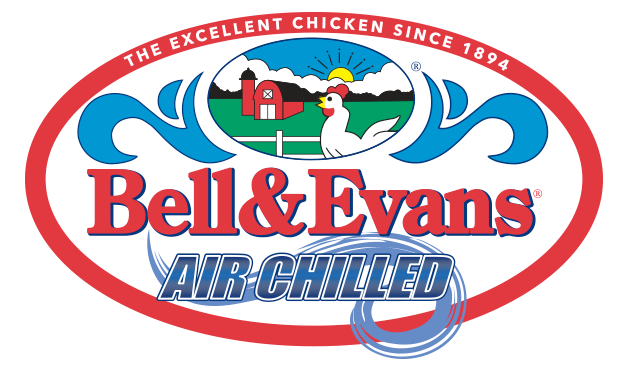Bell & Evans Bio-Security
With heightened concern about avian influenza, Bell & Evans chicken company in Fredericksburg, PA is a role model to the poultry industry in protecting its flocks. And, in the unlikely event of an outbreak, it has protocols in place to handle the situation.
Bell & Evans was recently featured on CNN’s The Situation Room with Wolf Blitzer as a leader in the poultry industry for its bio-security protocols. The care begins with Scott Sechler’s choice of family farmers to raise Bell & Evans chickens. The farms must be isolated from other poultry farms and must make the required upgrades and refinements to meet Sechler’s high standards to raise Bell & Evans all-natural chickens.
Bell & Evans’ hatchery is also isolated and no live birds, except for the hatching chicks, are on the premises. The chicks are transferred to the grow-out houses in climate controlled trucks.
Feed trucks’ wheels are washed down before entering a farm and visitors and personnel wear special coveralls and shoe covers in the chicken houses. In addition, the houses are thoroughly cleaned and disinfected after each flock vacates and lay fallow for two weeks before new chicks are brought from the hatchery. Fresh water drip and sip systems are used and the chickens are fed an all-vegetarian diet with plenty of vitamins and minerals. No antibiotics, additives or by-products are ever allowed. These measures make for healthier, happier birds with strong immune systems.
TRANSCRIPT: CNN The Situation Room, March 14, 2006:
SNOW (voice-over): Behind the serene scene at this Pennsylvania farm, restricted vehicles have to be disinfected. Protective suits have to be worn, all before entering a chicken house holding 30,000 birds.
Scott Sechler says he’s policing his business to prevent an outbreak of bird flu.
SCOTT SECHLER, OWNER, BELL & EVANS: After the avian influenza episode we had back in the early ’80s, bio-security is very, very important. And, so, we don’t want to drag anything into the building.
SNOW: In 1983 and ’84, a strain of flu avian flu, not the strain of H5N1 that we are seeing today, spread through poultry in Pennsylvania. Seventeen million birds had to be destroyed, costing the economy tens of millions of dollars.
At the time, Sechler’s business was just starting out. It’s now worth about $170 million. He says migrating birds make bird flu’s return inevitable. Health officials agree, predicting that wild birds could bring the deadly H5N1 strain into the U.S. in months.
SECHLER: We have to treat this seriously. This is our — our livelihood. And, you know, this is what we have been feeding our customers for years and years and years. (It’s a matter of trust.)
SNOW: While the threat to humans is low, the chicken industry is bracing for the day when bird flu shows up on a U.S. farm.
RICHARD LOBB, SPOKESMAN, NATIONAL CHICKEN COUNCIL: All the chickens on that farm will be destroyed. None of them will go to market. None of them will enter the food supply in any way.
SNOW: Pennsylvania veterinarian Sherrill Davison is using tracking systems to impose quarantines on farms.
DR. SHERRILL DAVISON, SECRETARY-TREASURER, UNIVERSITY OF PENNSYLVANIA LABORATORY OF AVIAN MEDICINE AND PATHOLOGY: If we have an outbreak, we can very quickly identify a farm.
SNOW: Despite the assurances, Sechler still worries, not about bird flu, but about consumers shying away from chicken.
SECHLER: If 5 or 10 percent of the people quit eating chicken, we have got a problem.
(END VIDEOTAPE)
SNOW: Even without any traces of the deadly strain of HN51 (sic) in the United States, the Department of Agriculture recently reported that chicken exports have dropped, because consumers overseas are shying away from eating poultry — Wolf.

